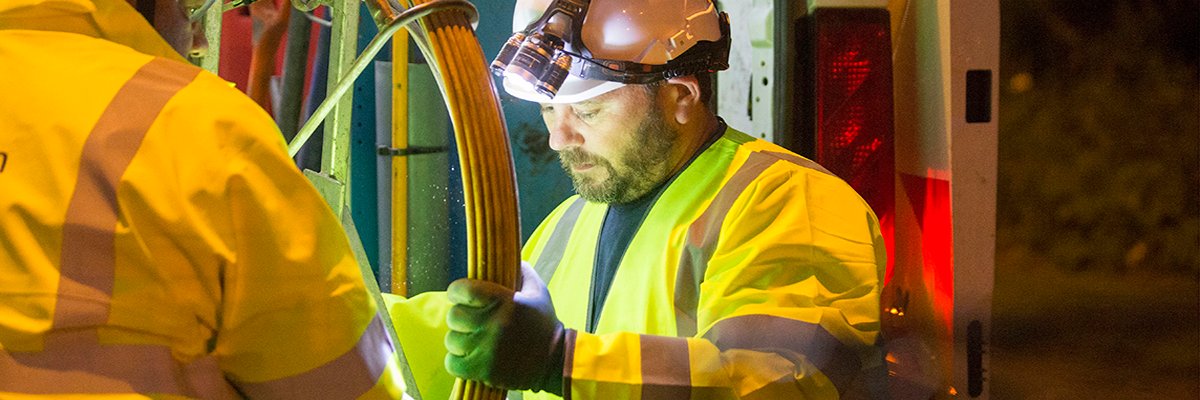A National Audit Office (NAO) report has found that despite the UK government’s Superfast Broadband Programme helping to extend high-speed online broadband coverage, the country still has a broadband network that does not reach everyone and is not fully future-proof, despite a commitment to roll out faster gigabit coverage nationwide by 2025.
The NAO also warns that the government has set itself a challenging timeline for 2025, which it says will be particularly difficult to achieve for the hardest-to-reach premises and there is a risk that those in the most rural and remote locations will be left further behind.
The NAO noted that the 2010 aim of David Cameron’s government was for the UK to have the best superfast broadband network in Europe and it set up the Superfast Programme to subsidise broadband roll-out to areas that were not commercially viable for providers to reach. Industry stakeholders and UK regulator Ofcom now consider superfast to mean download speeds of at least 30Mbps, a definition since adopted by the Department for Digital, Culture, Media and Sport (DCMS) for contracting purposes.
The NAO found that along with the commercial roll-out, the Superfast Programme helped the DCMS to achieve its target of 95% superfast broadband coverage by 2017 broadly on time. The programme has provided £1.9bn of public subsidy to support the delivery of faster broadband to 5.3 million premises that are not profitable for the telecoms industry to reach. The NAO calculates that right now, 95% of UK premises have access to Ofcom’s recommended superfast download speed, of which 17% (5.1 million premises) were reached through the Superfast Programme.
Yet despite this coverage, the NAO found that many people in the UK still experience poor broadband. It noted that suppliers to the Superfast Programme were encouraged to prioritise roll-out to the easiest-to-reach premises, which meant premises in rural or remote areas were left behind.
The NAO believes rural coverage for superfast broadband is now 80%, compared with 97% in urban areas. It is lowest in rural Northern Ireland, at just 66%. Also, only 57% of UK premises that have access to superfast broadband are signed up to superfast packages because they may be unaware that faster services are available, may find their existing service sufficient, or consider faster services too expensive.
The report also suggests that consumers may also not experience their advertised broadband speeds for several reasons, including factors in the home.
The report also acknowledges that the UK’s existing broadband infrastructure has been put to the test in the Covid-19 pandemic. Ofcom considers the existing infrastructure to have held up well, even though some stakeholders representing areas with large rural populations told the NAO that the pandemic had exacerbated the rural-urban divide.
The NAO also said that so far, the DCMS has prioritised increasing broadband coverage over speed. And although superfast broadband is fast enough for most household use today, the report warned that internet use is rising by 40% a year, driven largely by video streaming, and the DCMS is now focused on ensuring that the UK has a broadband network that will meet future demand.
In a demand to speed up coverage, the NAO insisted that in trying to deliver gigabit-capable broadband to the final 20% of premises by 2025, the DCMS must manage the tension between meeting the programme’s deadline and serving those in greatest need. It also warned that accelerating the Future Programme creates a risk that the DCMA will seek to deliver to as many premises as possible in the timeframe, rather than starting with those in greatest need.
The NAO recommended that the department presents a detailed plan and schedule for the Future Programme that sets out how it will meet the proposed deadline and is transparent about reporting on the plan. Also, it should set out whether the Future Programme will prioritise the hardest-to-reach premises.
“The Superfast Programme extended the nation’s broadband connectivity and helped people to work and study from home and stay connected during the Covid-19 pandemic,” said Gareth Davies, head of the NAO. “However, the UK has a broadband network that does not reach everyone and is not fully future-proof.
“Less than a decade after launching the Superfast Programme, the government has identified the need to upgrade the broadband network again. To deliver the government’s vision of achieving nationwide gigabit connectivity, the DCMS must manage the tension between meeting a challenging timeline and serving those in greatest need.
“Failure to do so risks leaving the hardest-to-reach areas even further behind and widening the urban-rural divide.”













